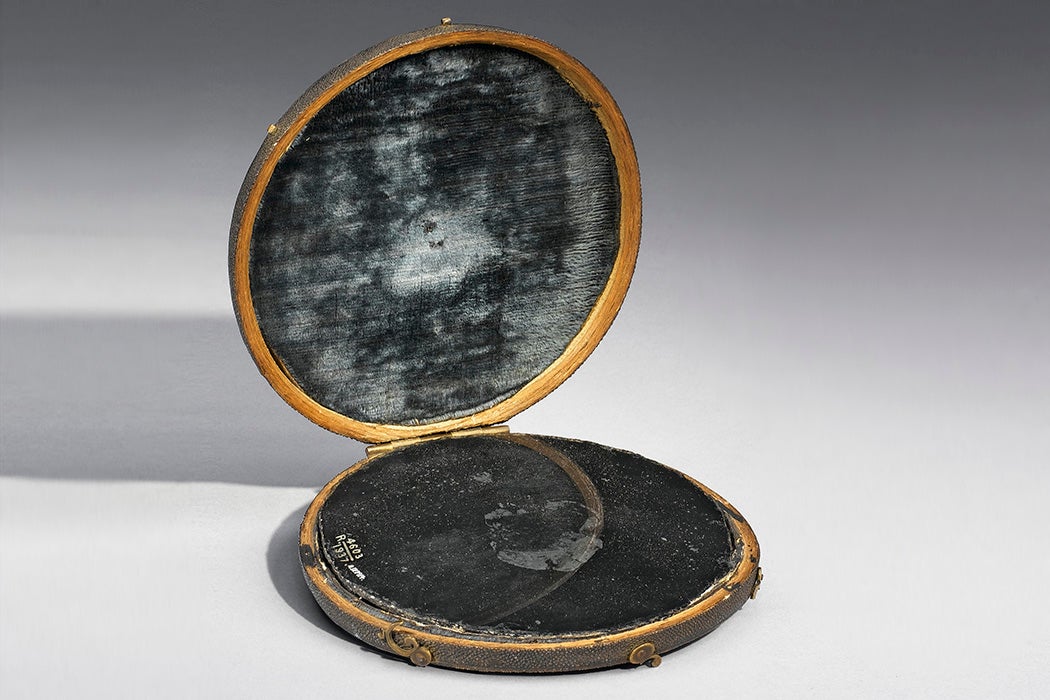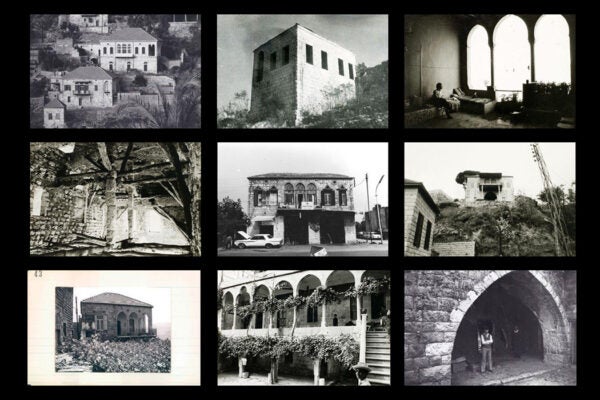The object pictured above is a Claude glass, a key accessory for any circa-1700s British tourist. Here’s how it works: when you arrive at a scenic spot, you turn your back to the view, and hold up the mirror to look at the scenery reflected in the glass. On the face of it, it’s a somewhat absurd concept. Imagine tourists flocking to a famous beauty spot, only to turn around and fix their eyes on its reflection in a tiny dark mirror.
Unsurprisingly, the practice sometimes resulted in accidents. The poet Thomas Gray recorded that, when backing up to get a better view of the scenery in his Claude glass, he “fell down on my back across a dirty lane with my glass open in one hand, but broke only my knuckles.”
The Claude glass was named for Claude Lorrain, a French landscape painter beloved for his sunset-tinted depictions of Roman ruins. Carrying a Claude glass was like having a portable Lorrain in your pocket, ready to transform any jumble of trees and rocks into a vision of painterly charm: framed and set apart from the rest of the landscape, color palette simplified, bathed in gentle, hazy light.
With the help of the glass, amateur painters could imitate Lorrain with ease. The more ambitious carried glass slides in different colors, which they could use to superimpose tones on the landscape. With the help of the slide, the land could be suffused with autumnal gold or draped in blue frost; the light of day could be transformed into dawn, sunset, or moonlight.
The popularity of the Claude glass was accompanied by a sea-change in how the British thought about landscapes. Consider the case of the English Lake District. In the 1600s, it was widely regarded as an ugly and depressing spot. As one traveller put it, it was “nothing but hideous, hanging Hills” and “a confused mixture of Rocks, and Boggs.” By the late 1700s, it was one of England’s most popular tourist destinations. Something dramatic had happened to the way people saw the land itself.
This transformation was driven by a new development in aesthetic theory: the rise of “the picturesque,” which joined the sublime and the beautiful as a guiding aesthetic ideal. Contemporary aesthetic theory posited that the sublime was expressed by the awe inspired by rugged mountains, dark forests, and churning waves, while the beautiful was expressed by the comfort and repose of smooth lawns, fresh young flowers, and graceful saplings. Into this picture stepped the picturesque, considered to be a mix of the two: the sweetness of the beautiful, cut with some of the sublime’s majestic terror. Most importantly, the aesthetic of the picturesque trained people to look at landscapes as if they were landscape paintings, and the Claude glass was the perfect tool for the job.
“A piece of Palladian architecture may be elegant in the last degree,” wrote William Gilpin, one of the first proponents of the picturesque. “But… [s]hould we wish to give it picturesque beauty, we must use the mallet, instead of the chisel: we must beat down one half of it, deface the other, and throw the mutilated members around in heaps.”
Gilpin was speaking of painting, not suggesting that his readers rush out to beat pieces of classical architecture with hammers. Nevertheless, no sooner was the picturesque identified out in the world than landowners began trying to recreate it at home. Gardens were redesigned in keeping with picturesque ideals, with curving paths, fake “wildernesses,” and rugged terrain. This era also witnessed the invention of the ha-ha—a fence sunken into the ground, creating the illusion of continuity between the garden and the larger landscape.
Weekly Newsletter
As the picturesque garden became the de facto English style, it took on an intriguing political significance. The wide variety of plants, winding walks, and semblance of naturalness were seen as hallmarks of the “enlightened” English spirit. This stood in contrast to the formal gardens of France, which were laid out in geometric patterns best appreciated from a single, central point—a clear sign of a despotic mindset, at least according to English landscape gardeners.
Yet at the same time that the picturesque sensibility was developing, a much deeper and more dramatic transformation was taking place in the relationship between British people and their local landscape: the enclosure movement, which turned lands long held in common into private property. The loss of the common lands spelled disaster for the peasants who depended on them for survival. Vast numbers of impoverished agricultural workers were forced to leave the country and make their living in the cities, thus setting the groundwork for the Industrial Revolution. The enclosure of the common lands, though driven by economic profit, was often justified in aesthetic terms; the same hedges that fenced the peasants off from the common lands were lauded as “highly picturesque.”







